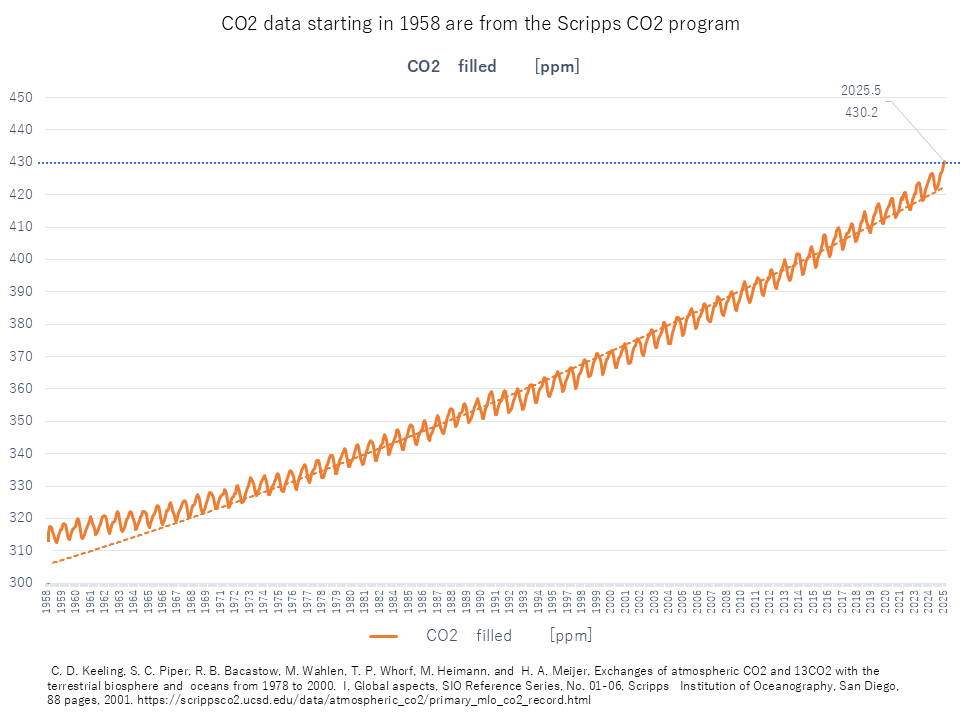Pick Up
1272. Atmospheric Carbon Dioxide Concentration Record Updated

1272. Atmospheric Carbon Dioxide Concentration Seasonal Peak Updated
Scientists from NOAA (National Oceanic and Atmospheric Administration) and the Scripps Institution of Oceanography at the University of California San Diego reported that the seasonal peak of atmospheric carbon dioxide concentration at the NOAA Mauna Loa Observatory in Hawaii exceeded 430 ppm for the first time.
Scientists at the Scripps Institution of Oceanography calculated a monthly average of 430.2 ppm in May 2025, up 3.5 ppm over May 2024's average of 426.7 ppm. Scientists at the NOAA Global Monitoring Laboratory reported an average of 430.5 ppm, up 3.6 ppm from last year.
Like other greenhouse gases, CO2 traps heat like a blanket, warming the lower atmosphere. This changes weather patterns, causing extreme weather events such as heat waves, droughts, wildfires, and even heavy rains and floods. Rising CO2 concentrations also contribute to ocean acidification.
The Mauna Loa Observatory, located high on the slopes of the Mauna Loa volcano, is about 3,300 meters above sea level. In 1958, Scripps Research Institute scientist Charles David Keeling began monitoring CO2 concentrations on the observatory grounds. Keeling was the first to recognize that CO2 concentrations in the Northern Hemisphere peak in May, drop during the growing season, and rise again in the fall when plants die. These records of CO2 fluctuations later became known as the "Keeling Curve." Keeling was also the first to recognize that, in addition to seasonal variations, CO2 concentrations are rising annually.
The Mauna Loa Observatory is considered a benchmark climate monitoring station in capturing the global rise in CO2 concentrations, but it does not fully capture the variations in atmospheric CO2 concentrations. Observatories in the Southern Hemisphere have not yet exceeded 430 ppm, and have a reversed cycle. Measurements from sampling stations around the world provide a fundamental research data set for international climate scientists and policymakers.
Contributor: IIYAMA Miyuki, Information Program
